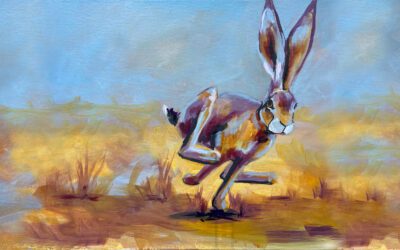My life as a professional geologist began the week before I turned 24, since then I’ve spent a significant portion of the last 35 years in the air, traveling for work and play. Whether in a two-seat tail-dragger or a 747, I always choose a window seat (yes, I know it’s not a choice in a two-seater, but you get my drift). On a recent outing, a Jahns Lecture visit to the University of Alaska’s Anchorage and Fairbanks campuses, I was thrilled by the truly breathtaking views of Denali (the High One in Athabaskan) while flying north. On the way home, another clear day provided equally amazing views of the mountains of Wrangell-St. Elias National Park, and the glaciers that carve them. To see the peaks and valleys, glaciers, and meandering and braided streams of Alaska’s dramatic landscape from an eagle-eye vantage point brings to mind things I’ve learned from the time my dad identified the rocks I picked up as a kid to my Geo 101 class as a college freshman to the lessons I’m still learning in the field today.
Perhaps the only thing better would be piloting the plane myself during those moments, choosing where to dip my wings and ride the winds. That is what engineering geologist, Will Ross, Inundation’s main character, relishes most. Read on to get a taste of what Will savors in those moments.
Turbulence jounced the plane and jolted Will’s attention back to the cockpit. He gripped the yoke and rode through the bumps. Leaving the wide floodplain of the Delaware River, he steered toward the peaks of the Poconos, the landscape rising beneath him. When he got to the Susquehanna River, he followed its green ribbon west-southwest. At the confluence of the North and West Branches of the Susquehanna, he left the river behind and headed for the heart of the Valley and Ridge.
Ridges of resistant rocks, sandstones, conglomerates, and limestones yielded to valleys underlain by soft shales, then climbed again on the harder rocks of the next ridge. The rock units spanned the land surface in parallel bands. Except where anticlines and synclines, geologic structures like the crests and troughs of ocean waves, angled into or out of the subsurface, there the units formed striking chevron patterns. To the right reader’s eye, those patterns told the story of Earth’s processes through the ages.
In Turkey, Will would read the story in the rocks. And in that story, he would find the answers they needed to make Kayakale Dam work.
Will looped among the lofty cumulus clouds. He leaned into turns and rolls, feeling the physics of flying in his muscles. His internal gyroscope engaged. Then he pulled into a stall. The stomach-dropping sensation of losing lift tested him. He stayed with it, fighting any hints of fear that rose in his throat. Satisfied he was under control, he pushed her nose down, gave her more throttle, and resumed his private air show by plummeting through another cloud break.
His neck relaxed and his jaw unclenched as he moved with the forces acting on the plane. Never against them. That’s what you do, he decided. Move with the forces acting on you.
Peering out the window to see the sights, yes, but it’s much more than that. Reading the landscape, and the story it has to tell, can change my whole outlook. It’s about perspective. Preparing the Jahns Lectures and gazing out the many airplane windows on my way to them, made me contemplate the work I’ve done over the decades as a professional geologist. It also helps me in moving ahead – reflecting on the horizon of my Jahns Lectureship, then looking forward to my second career as a writer (the Geologist Writer, of course) for which I’ve been laying a foundation for years as a student of the Earth, of the craft of writing, and of life.
In search of perspective? My answer is to book a window seat. Indeed, not doing so would be moving against the forces acting on me.
Window or Aisle? Literal or metaphorical? What’s your view? Why?





Interesting perspective and great photos!!!
Stunning pic. I’ve followed the Danube through Europe (well, I think it was the Danube – the flight attendant wasn’t sure!), climbed the Austrian Alps, jumped into the fluffiest of cloud formations, scaled skyscrapers, farmed many, many acres and watched the most spectacular sun rises and sets, all from the not-so-comfortable comfort of my window seat. And the window serves as the closest thing to a flat surface to prop my pillow in mostly-futile attempts at in-air sleep. Gets a little tricky when you need to get out and your row-mates (strangers) are snoring but still worth the struggle. Metaphorically? The world is often a more beautiful place when seen from a safe distance. Thank you, Deb, for giving me the opportunity to express those thoughts.
Deb – great piece! I totally agree – I love the windows. I also make sure that I do not sit over the wing and also that I have a window – twice this year I have had “window” seats without windows!
A professor in my department wrote a book about 10 years ago on the geology from the air on commercial airlines. It was good!
Cheers, Scott